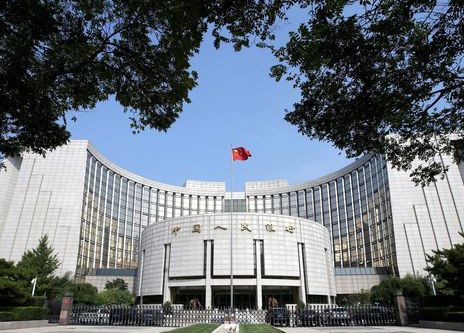
China’s central bank, the People’s Bank of China, froze interest rates on mid-term liquidity support windows (MLF) loans on the 15th.
The People’s Bank of China supplied 150 billion yuan worth of one-year medium-term liquidity support (MLF) funds to commercial banks on the 15th, maintaining the applied interest rate at 2.85 percent as before.The one-year MLF, which expired on the same day, amounted to 150 billion yuan, and there was no additional liquidity supply.MLF is a policy tool for the People’s Bank of China to control liquidity and interest rates through the supply of funds from commercial banks.
The People’s Bank of China can adjust the LPR, which is actually the characteristic of the benchmark interest rate, by adjusting the MLF interest rate that affects the “loan cost” of financial institutions.
Market watchers noted the possibility that the People’s Bank of China will lower MLF interest rates ahead of the announcement of the LPR in April on the 20th, giving a clear signal of a LPR cut.
However, despite the freezing of MLF interest rates that day, the possibility of a LPR cut on the 20th is still open.China’s State Council announced on the night of the 13th that it will operate monetary policy tools such as the reserve ratio in a timely manner, and it is highly likely that the People’s Bank of China will officially announce its plan to cut the reserve ratio after the market closes on Friday.
A reduction in the reserve requirement rate, which significantly expands the liquidity supply, increases banks’ lending capacity.
In fact, in December last year, the People’s Bank of China immediately lowered the LPR without lowering the MLF interest rate. At that time, the reserve ratio was cut a few days before the LPR cut.
The Chinese government is strongly expressing its willingness to boost the economy as it faces the impact of the spread of COVID-19, which is greater than the 2020 Wuhan crisis, as Shanghai and Shenzhen have been blocked from the city.Prime Minister Li Keqiang said at a major growth meeting held on the 11th, “There have been more than expected changes in the international and domestic environments, which has led to greater downward pressure on the economy,” stressing that the economy should be stabilized and guaranteed basic people’s livelihood.
The Chinese economy has been cooling rapidly in the aftermath of the contraction of the real estate market since the second half of last year, but this year, it has been exposed to greater downward pressure as factors such as the massive spread of COVID-19 in China and the war in Ukraine have been added.
Amid such worsening conditions, observations are rising that it has already become difficult for China to achieve this year’s target of 5.5 percent economic growth.
Yao Jingyuan, a senior economist at the National Bureau of Statistics, said, “At first, I thought there was no problem in achieving the 5.5% growth target this year, but we were certainly affected by the COVID-19 outbreak in March.”
The Jung-gu Party and the government, which have to create an atmosphere of national election ahead of the 20th party congress in autumn, which will officially formalize President Xi Jinping’s long-term rule, have no choice but to make all-out efforts to stabilize the economy.
However, the U.S. Federal Reserve (Fed) is rapidly raising its key interest rate on inflation, and central banks in other major countries have moved in the same direction, increasing China’s burden of “reverse driving.”
Some say that the Chinese authorities’ freezing of MLF interest rates this time, contrary to some expectations in the market, reflects the situation in which there is not much room for interest rate cuts.
The narrowing or reversal of the U.S.-China interest rate gap is likely to cause side effects such as the departure of foreign investment capital in China and the rapid devaluation of the yuan.
“The Fed can increase the intensity of monetary policy tightening in May,” said Kaoruidong, an economist at Kwangda Securities. “The internal and external balance pressure facing the People’s Bank of China will rise significantly.”
SAM KIM
US Asia Journal

